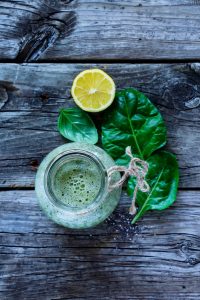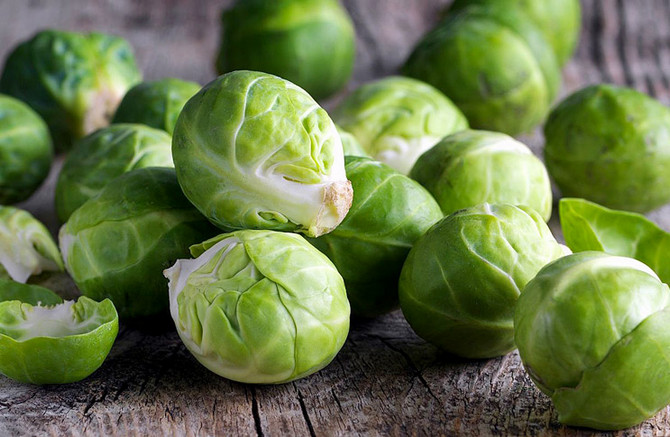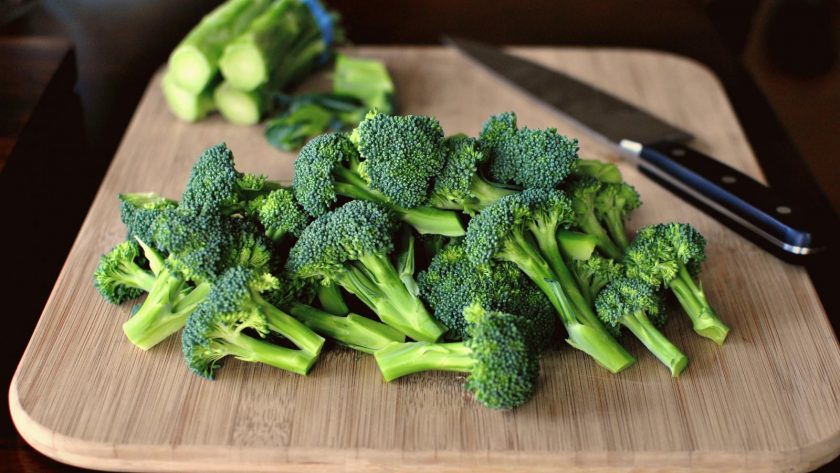Brrrrrrrrrrrrrr! It’s cold and wet and gray … yes, winter is here! We are constantly tired and feel heavy and limp. But that need not be. With the right diet and the right attitude, you can add color to winter, at least a little more … and this is where green vegetables come into play.
Here are five little green wonders that will provide you with energy and strengthen your immune system.

Broccoli
The German cult vegetable par excellence. It grows in Europe, the USA, even Asia, where broccoli is originally also native. Broccoli has also found its place in German gardens. Thanks to beta-carotene and vitamin C, broccoli has an antioxidant effect and can rid the body of harmful substances. Vitamin K, on the other hand, is important for blood clotting and building bones; calcium also strengthens bones. Carotenoids support the eyesight and bioactive substances such as sulforaphane and glucosinolates are even supposed to prevent tumors and cancer.
- Secondary plant substances against inflammation
- Valuable calcium source for vegans
- Low in calories: approx. 30 kcal per 100g
Tip: Raw broccoli contains the most vitamins, as some vitamins are lost when cooked. If you don’t want to eat broccoli raw, you can conjure up healthy green smoothies out of it, for example combined with apple, cucumber, strawberries and banana! You can sweeten the whole thing with a dash of almond milk.
Green peppers
The green bell pepper is actually green because it is not ripe, so it tastes tart, while the yellow and red bell pepper are a little sweeter. However, all peppers contain valuable cell-protecting antioxidants such as flavonoids and carotenoids. Paprika also contains vitamin C in high doses: 100 grams of green peppers contain around 100 milligrams of vitamin C. Interestingly, red peppers have four times as much vitamin C. The following applies: the more ripe the vegetables, the more vitamins they contain. Vitamin C is not only a source of energy and supports the immune system, it also helps with circulatory disorders and cardiovascular diseases. Vitamin A has a positive effect on skin and eyes because it protects cells. In addition, B vitamins can support brain performance and counteract headaches.
- A real vital substance bomb with vitamins A, B and C
- Cell-protecting antioxidants
- Very Low in calories: approx. 20-30 kcal per 100g
Tip: Here, too, it is recommended to eat peppers raw – tastes super fresh in salads, in Asian dishes or also very rustic on dark bread with cream cheese, it tastes very delicious on pumpernickel!
Spinach

Spinach … you hate it or you love it. Popeye showed us back in the 30s: Spinach makes you strong. It contains vitamin C and vitamin K and plenty of beta-carotene, the precursor of vitamin A. The minerals iron, magnesium and manganese are very important for the body as it cannot produce them itself. Manganese has a positive effect on the formation of connective tissue, magnesium and calcium help build bones and muscles. Iron supports the transport of oxygen in the body and can counteract tiredness. Iron from spinach is difficult for the body to use, but spinach contains more iron than most vegetables. So that iron can be better absorbed, it is advisable to consume spinach with orange juice, tomatoes or potatoes. A large amount of vitamin C causes oxalic acid to lose its effectiveness. Among the vegetables, spinach is one of the best vegan protein suppliers – there are 2.5 grams of protein in 100 grams of spinach.
- High quality vegan protein source
- Hardly Calories, approx. 12 kcal per 100g
- Satisfies food cravings
Tip: You can prepare the baby spinach raw as a salad, the leafy vegetables can be prepared but also steam. Vegetable broth gives the whole thing more pep. Small feta cubes or onions and garlic also taste particularly good in spinach. If you prefer to drink spinach, you can simply mix ice cubes with spinach, orange, pineapple and apples in a blender … et voilà, the day can come!
Kale
Among the green vegetables, kale is often referred to as a “superfood” because it contains an above-average amount of minerals and vitamins. Secondary plant substances work against oxidative stress and strengthen the immune system. Compared to other vegetables, kale offers a lot of protein and is considered a good vegan protein source. Similar to green peppers, kale also has many vitamins, including vitamins A, C and K. Folic acid plays an important role in the formation of cells and blood.
- First-class protein supplier among vegetables
- Anti-inflammatory phytochemicals
- Digestive fiber
Tip: Kale is delicious in soups or sauces. You can also add kale to green smoothies. Kale with oranges, ginger and bananas tastes particularly unusual.
Brussels sprouts
Slightly nutty and surprisingly different, that’s how Brussels sprouts taste. It is also beneficial because it contains vitamin K, folic acid and potassium. Vitamin C and zinc strengthen the immune system and have a positive effect on the complexion, folic acid helps with the formation of red blood cells. Vitamins from group B should help with stress and fatigue. In addition, trace elements such as selenium but also chlorophyll can have an anti-cancer effect.
- Young vegetables have only been grown for about 100 years
- One of the most fiber-rich vegetables
- Hardly any fat, even if it is higher in calories than other types of cabbage
Tip: Brussels sprouts tastes delicious in a salad. With crunchy walnuts, aromatic goat cheese, freshly squeezed lemon juice and a dash of olive oil, it becomes a real taste experience. Thanks to its nutty taste, Brussels sprouts are also ideal for cream soups.

Why green vegetables?
By the way, the green color of the vegetables is thanks to the chlorophyll, a natural coloring agent. Chlorophyll has a similar structure to the hemoglobin in our body. It cleanses the blood, supports the transport of oxygen and the formation of new blood cells. This is why chlorophyll is also called “green blood”. How about a mix of green vegetables and green superfoods? The greener … the healthier!
And because the attitude is still the key to happiness, we have 3 good-mood guarantee tips against the winter blues ready:
1. Like a short vacation … Plan a wellness day, followed by a cozy movie evening with the ladies. This regenerates strength and is incredibly relaxing!
2. Color your home! Yes, you heard correctly, because bright colors and fresh scents are real mood enhancers. It may be gray and cold outside, but summer can still live at home, right?
3. Keep it moving – in winter you prefer to lie at home on the sofa because it’s too cold outside and it’s too crowded in the fitness room … But how about a game of Wii, Twister or Just Dance with your loved ones? Dancing and laughing burn a lot of calories and are fun too! Just 10 minutes of laughter will burn 50 kcal! In this sense, happy holidays!




